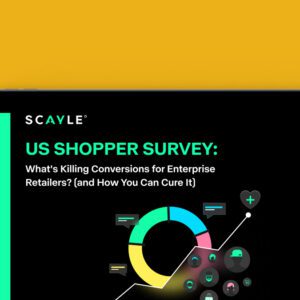Amazon’s summer Prime Day sales event now serves to kickstart many retailers’ summertime sales and back-to-school marketing efforts, and has generally pivoted marketers’ planning calendars. This year, peak Halloween marketing time, usually running from mid-September to early October, turned into “Summerween”-themed sales and product drops. And now, brand marketing teams wonder if the holiday marketing calendar has been elongated too. In fact, 54% of marketers planned to activate their 2024 holiday campaigns in Q3.
But consumers have spoken, and 89% think pre-October is “too early” for brands to launch their Christmas marketing campaigns, according to new data from brand tracking company Tracksuit. Additionally, 41% said they don’t start thinking about the holidays until after Halloween. As a result, marketers have a tighter timeline to generate demand and drive conversions, especially since there are only 47 days until Christmas. Now is the time for marketing teams to ramp up their omnichannel creative and develop emotionally resonant campaigns, but where and how should they start?
During a recent interview with Retail TouchPoints, Mikayla Hopkins, Head of Marketing at Tracksuit, shared how retailers can better align their holiday marketing with consumer behaviors and expectations, including:
- Optimizing campaign planning in light of a shortened season;
- Identifying key moments that will drive marketing influence and impact; and
- Using holiday marketing to set the stage for long-term engagement and loyalty.
Retail TouchPoints (RTP): The holiday season is quite a bit shorter than in recent years, with only 27 days between Thanksgiving and Christmas Day. How will this ultimately impact marketers’ planning calendars, now that we’re past Halloween?
Mikayla Hopkins: Brands should prioritize strategies that maximize engagement in this limited time frame, focusing on creating buzz and anticipation without overwhelming consumers with early promotions.
According to Tracksuit data, the majority of consumers (55%) prefer campaigns to kick off in November. Brands should use this time to create campaigns that focus on building emotional connections to better resonate with consumers and ensure they remain top-of-mind when consumers are ready to shop. Tracksuit has found that ads evoking positive emotions are 42% more likely to drive long-term brand growth, which underscores the importance of crafting ads that resonate emotionally with consumers.
RTP: Although the holiday season is shorter, it seems like there are more holiday sales events than ever, which is making everything blend together for consumers. Do key “marketing moments” or tent poles in the planning calendar still exist?
Advertisement
Hopkins: In today’s evolving marketing landscape, it’s essential for marketers to think beyond the confines of conventional tent pole moments. Instead of pouring all resources into these peak sales periods, the focus should be on creating a continuous engagement strategy. By spreading marketing efforts throughout the year, brands can connect with consumers when they aren’t overwhelmed by a barrage of holiday campaigns, allowing them to carve out a unique point of difference.
After all, focusing solely on these high-demand moments often means facing increased advertising costs and saturated channels. If every brand within a category is competing for share of voice during these key marketing events, it can lead to customer fatigue.
That’s why establishing a brand presence well in advance is crucial. By warming up customers to your brand ahead of key shopping days like Black Friday, you ensure your brand is top-of-mind when they’re ready to make a purchase. This proactive approach not only enhances brand familiarity but also fosters stronger emotional connections with consumers. By nurturing relationships and maintaining awareness year-round, brands position themselves favorably for conversion when those peak moments finally arrive.
RTP: Consumers are especially mindful of value this year. How should brands think about balancing emotional connection and meaningful storytelling with deals and sales?
Hopkins: While traditional discounting can be effective, especially for consumers facing economic uncertainty, it’s equally important to consider the impact of sales and discounts on your bottom line — this is where marketers’ creativity becomes crucial. By delivering value through alternative strategies, brands can effectively navigate this challenging period, positioning themselves for long-term growth without relying on deep discounts.
Many savvy brands are finding ways to deliver value outside of reducing their prices, including enhancing the shopping experience, from intuitive website design to personalized marketing and exceptional customer service.
- Last year, Bondi Sands, a self-tanning brand, bundled complementary products to make holiday shopping more convenient and simpler; and
- Fashion brand Ruby emphasized sustainability and community-building through their TAKE B_ACK FRIDAY initiative. Customers were invited to resell past purchases, creating a circular shopping experience. Sellers were rewarded with a percentage of their item’s sale price, while shoppers enjoyed the opportunity to purchase one-of-a-kind, pre-loved pieces from across the brand.
RTP: Optimizing pricing and promotions requires alignment between marketing, merchandising and other key functions. How can brands make this a reality?
Hopkins: Establishing cohesion across the company — where all functions work toward the same objectives — is crucial. When marketing articulates the value and pricing of products, operations must be prepared to deliver on those promises. This kind of teamwork fosters trust and reliability, which are essential for encouraging customers to return.
Leveraging data analytics across departments can boost collaboration and help teams make smarter decisions. By sharing critical metrics, such as sales figures, customer feedback and brand performance data, it’s easier to see what’s working and what isn’t, which is key for marketers — especially during high promotional periods.
RTP: And how can brands ensure they’re setting their teams up to innovate and differentiate?
Hopkins: It’s important to encourage creativity within your brand, and to achieve that, you must foster a workplace culture where team members feel safe and motivated to share their ideas without fear of judgment. Bringing together diverse teams with different backgrounds and expertise can spark innovative thinking and unique solutions. If you devote time to creative sessions, you can relieve the pressure of expecting immediate results, allowing for more thoughtful and inspired ideas.
RTP: Can you share examples of brands that have achieved this kind of creative stewardship?
Hopkins: When you craft stories that truly resonate on an emotional level with your target demographic, you make them feel seen and valued. This approach not only sets your brand apart, but also nurtures loyalty that lasts long after the holiday season.
Our client Athletic Brewing does a brilliant job of this. The brand doesn’t promote a story around sober living; they promote a brand platform rooted in mindful consumption and inclusive social drinking experiences. Their creative stewardship can be seen in their latest partnership with Arsenal FC. The collaboration emphasizes inclusivity and aligns with growing consumer interest in alcohol-free options, particularly in sports settings, where social interaction often centers around drinks but doesn’t have to include alcohol.
RTP: How can brands turn the work they do during the holiday season into a long-term retention and loyalty strategy for the customers they win in Q4?
Hopkins: It’s important to not let your marketing efforts dwindle post-holidays. Keep the conversation going with your audience throughout the year using your typical touch points — such as newsletters, social media engagement or outside-the-box campaigns — to keep your brand top-of-mind when consumers are looking to shop for the products or services your brand sells.
Consistency in messaging and brand presence will reinforce your commitment to your audience, so maintain this ongoing relationship to build trust and keep your brand relevant in a crowded market. It’s all about creating a community around your brand where people feel connected and valued — not just during the busy holiday season, but all year.
The best marketers recognize that there are two types of market demand: “existing demand” (people ready to buy now) and “future demand” (those who will enter the market later). While rational ads effectively reach the approximately 5% of buyers currently in the market, they don’t connect well with the other 95%. These future buyers need attention-grabbing, memorable advertising — even if they’re not ready to buy yet. As marketers, we must both convert current demand and create positive brand memories for future buyers.
As you work to strengthen connections with your audience, leveraging consumer data on brand perceptions can be a game-changer for marketing strategies. Understanding how consumers view your brand is essential for crafting messages that resonate, but digital analytics only tells us how good we are at harvesting existing demand. They don’t tell us anything about how we’re building awareness and consideration among future category buyers. In 2025, the ROI on performance marketing will be heavily impacted by how well we built the brand this year, so we’d better know how that’s going.














